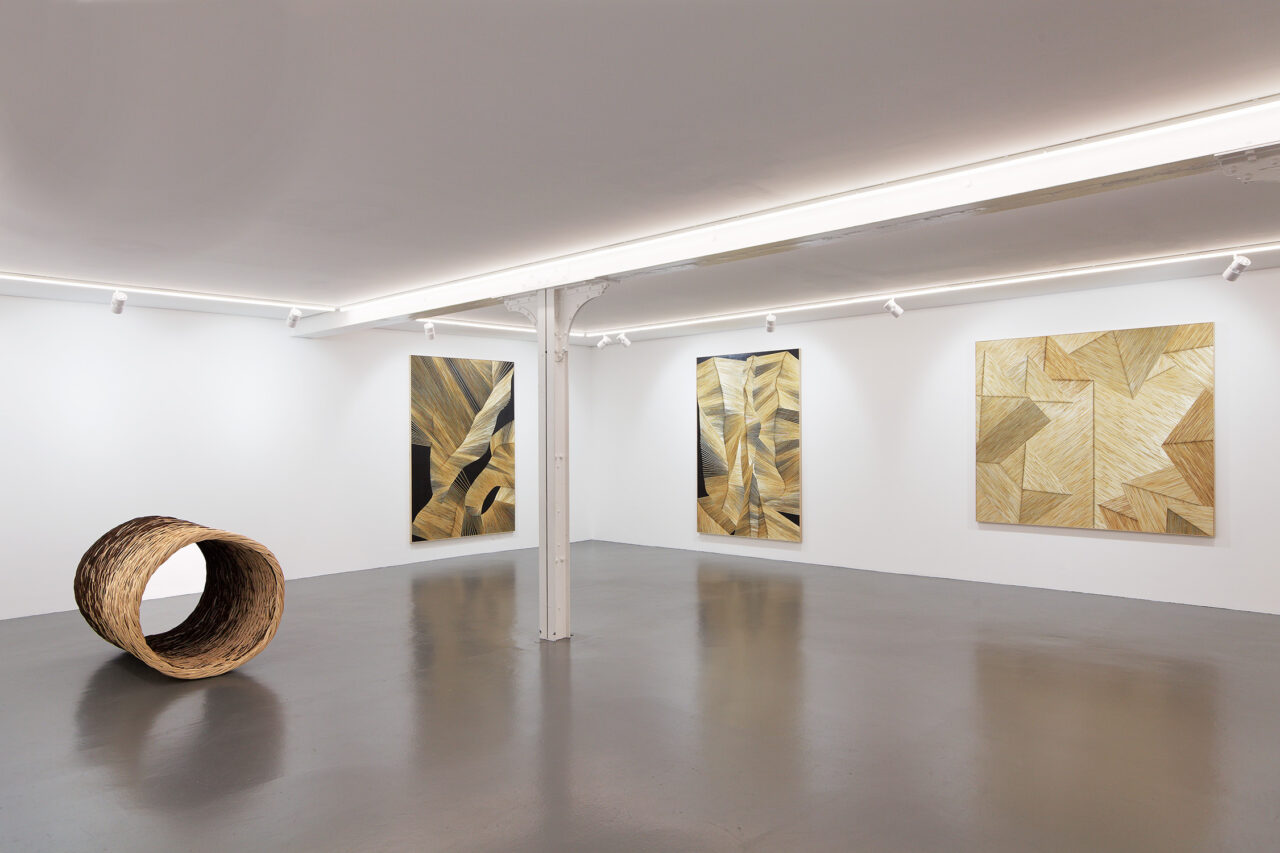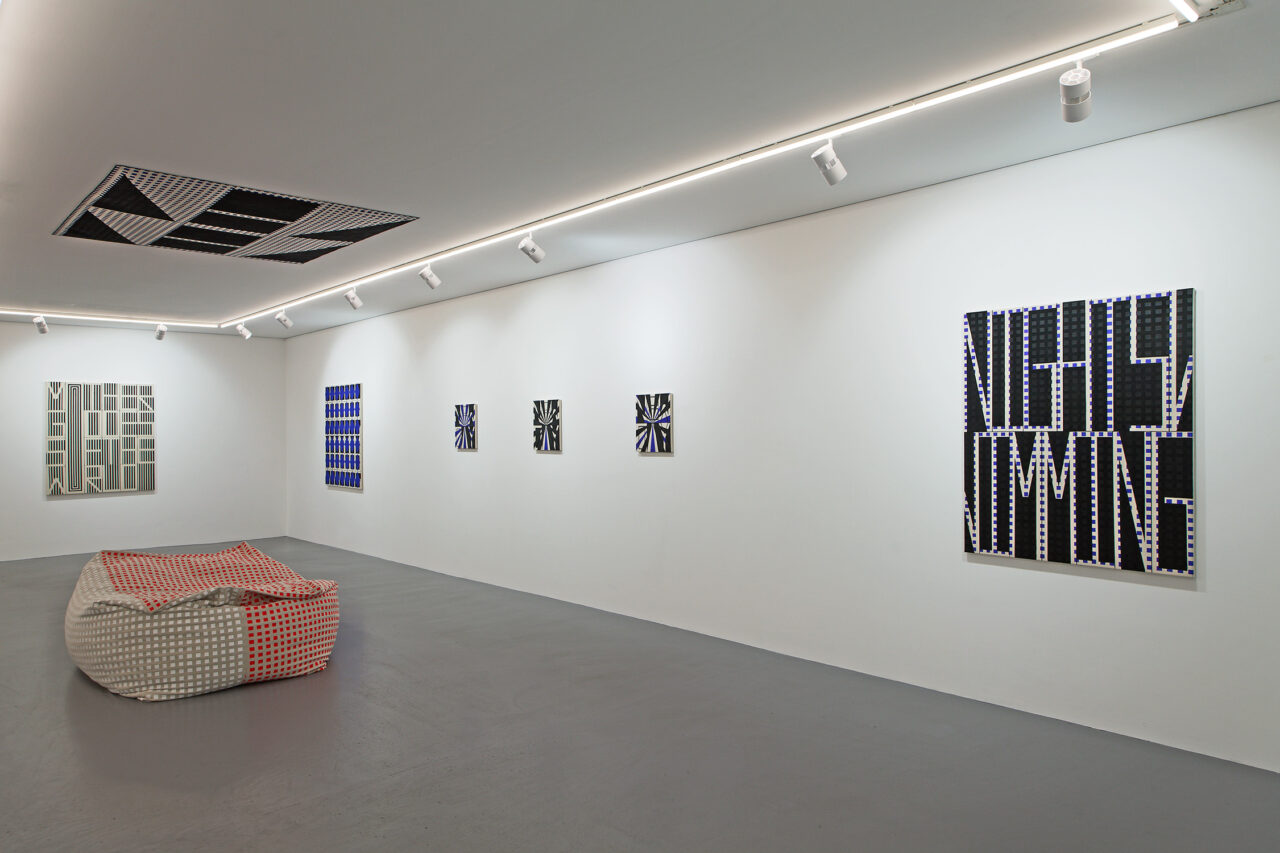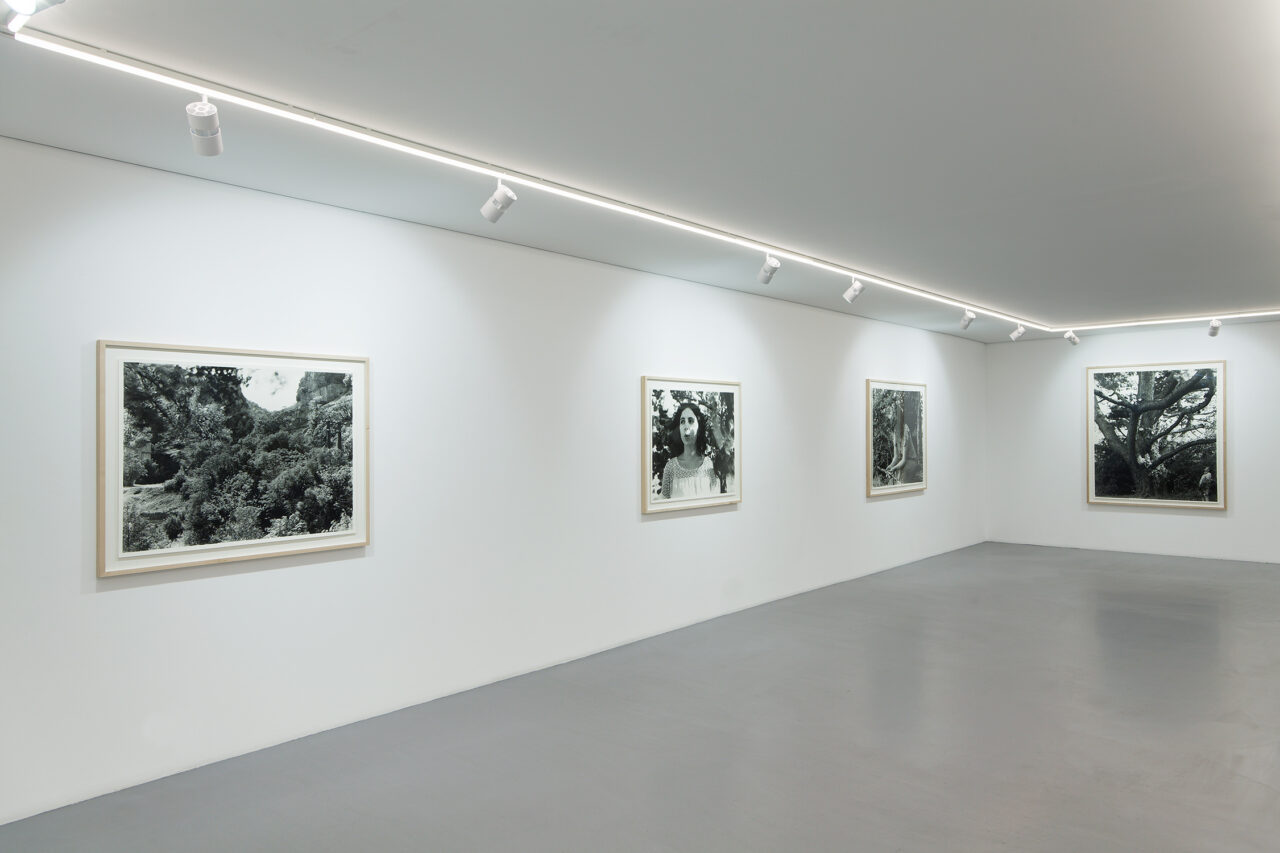André Butzer
André Butzer
03.11.12 → 22.12.12
![[:en]André Butzer, View of the exhibition, 2012[:fr]André Butzer, Vue de l’exposition, 2012[:es]André Butzer, 2012[:]](https://www.xippas.com/media/2014/02/IMG_6095-1280x853.jpg)
André Butzer is one of the most important painters in the young, contemporary, German art scene.Since the mid-1990s, André Butzer has developed his practice exclusively around the medium of painting and its history. Butzer references American and German history, contemporary politics, economic and social hierarchies, the leisure industry, and science fiction technology, drawing on both political and art history from Munch, Pollock, and Baselitz, to National Socialism, and from Siemens to Walt Disney.
André Butzer’s first works were influenced by German Neo-expressionist painters – such as Albert Oehlen – and he himself calls them “science fiction expressionism.” These works show an exaggerated, artificial reality often featuring grotesque forms inspired by animated films: he has created the imaginary planet “Nasaheim,” which is a contraction of NASA and Anaheim, the city founded by German immigrants in the 19th-century where Disneyland is now located. Characters living on “Nasaheim” are the product of invented mass culture, which pushes deformation to the extreme and this deformation, in turn, plunges the spectators into unending allusions.
Over time, these characters tend to fade little by little into the background, drawing our attention to the “world” around them. This marks André Butzer’s transition from the figurative to the abstract, where he privileges the autonomy of the pictorial medium.
The structure seems anarchic and the patterns blur together on the surface in a chaos of bright colors. The impasto and the application of paint directly from the tube onto the canvas has practically become Butzer’s signature. Leaving behind the sumptuous, brightly colored paintings that dominated his work in the past, he moves towards abstraction in 2010 when he produced his first “N-Bild.”
The canvases shown at the Xippas Gallery reveal a radical composition that may shock and even puzzle the public. Here, the artist regroups five paintings with similar compositions but different formats under the name “N-Bild.” The “N” is a sort of golden number for a real and dematerialized world govern by the laws that rule our systems of thought.
There is a juxtaposition between the incredibly vast, color palette that has given way to the endless nuances of white and black, where hues blossom in colored reflections and shadows; and the shy presence of horizontal and vertical rectangles now becomes assertive. The contrast, the composition’s structure, and the pictorial harmony are now exercised in an extreme fashion. Each canvas is composed of two black and white geometric forms. The horizontal one is on the top half of the canvas and the vertical one is on the bottom right. These works play with the potential in these forms and chroma. These two shapes represent the elementary facts of creativity: the relation between the top and the bottom, between the horizontal and the vertical, between the center and the margins. The optical effects present in each canvas, which also repeat within the identical compositions in this space, give the impression of an incredible strong presence of light movement. The “N-Bild” secrete their colors and are the total sum of the colors. Thus the spectators don’t perceive these colors as present. With these works, André Butzer explores the idea of universal experience and essence from a phenomenological view of the world. “I consider myself a colorist, I will always be a colorist, nothing else. My vision is to create this endless colorism through the absence of naturalist ready-made color. Visual art is an optical utopia, so anything visible has to be erased, the depositary of anything visible is not the work of art, but the work of art is a projector of the depositary.”
André Butzer’s works transcend naturalist conceptions and grapple with a world free of these limitations. The endless variations of tones and the nuances of potential color capture and reflect the light as one unity, attesting only to its presence. Butzer explains this matrix that seems to appear again and again: “the matrix was originally related to bodies of flesh: a living vertical body carrying a dead horizontal body.” In fact, the paintings make us think about our own presence and also our death and they act as a universal pietà that plung us into an atmosphere of disturbing calm.
André Butzer was born in Stuttgart, Germany (1973), and lives in Rangsdorf near Berlin.
Butzer has participated in numerous solo and group exhibitions both in Germany and abroad: Kestnergesellschaft, Hannover (2011) / Kunsthistorisches Museum – CAC Contemporary Art Club at Theseustempel, Vienna (2011) / Museu de Arte de São Paulo Assis Chateaubriand (2010) / Kunsthalle Nürnberg (2009) / ZKM, Karlsruhe (2008) / MUMOK, Vienna (2008) / Sammlung Goetz, Munich (2007/2006) / Kunstverein Ulm (2005)/ Museum der Moderne Salzburg (2005) / Kunstverein Heilbronn (2004) / Staatsgalerie Stuttgart (2004) / Kunsthalle Hamburg (2003) / Staatliche Kunsthalle Baden-Baden, Baden-Baden (2002).
He has shown works in Germany and abroad at the following galleries: Max Hetzler and Guido W. Baudach in Berlin, Christine Mayer in Munich, Metro Pictures in New York City, Rhona Hoffman in Chicago, as well as Gio Marconi in Milan, and the Bernd Kugler Gallery in Innsbruck in Austria.
Exhibition views
-
![[:en]André Butzer, View of the exhibition, 2012[:fr]André Butzer, Vue de l'exposition, 2012[:es]André Butzer, 2012[:]]()
[:en]André Butzer, View of the exhibition, 2012[:fr]André Butzer, Vue de l'exposition, 2012[:es]André Butzer, 2012[:]
-
![[:en]André Butzer, View of the exhibition, 2012[:fr]André Butzer, Vue de l'exposition, 2012[:es]André Butzer, 2012[:]]()
[:en]André Butzer, View of the exhibition, 2012[:fr]André Butzer, Vue de l'exposition, 2012[:es]André Butzer, 2012[:]
-
![[:en]André Butzer, View of the exhibition, 2012[:fr]André Butzer, Vue de l'exposition, 2012[:es]André Butzer, 2012[:]]()
[:en]André Butzer, View of the exhibition, 2012[:fr]André Butzer, Vue de l'exposition, 2012[:es]André Butzer, 2012[:]
-
![[:en]André Butzer, View of the exhibition, 2012[:fr]André Butzer, Vue de l'exposition, 2012[:es]André Butzer, 2012[:]]()
[:en]André Butzer, View of the exhibition, 2012[:fr]André Butzer, Vue de l'exposition, 2012[:es]André Butzer, 2012[:]
-
![[:en]André Butzer, View of the exhibition, 2012[:fr]André Butzer, Vue de l'exposition, 2012[:es]André Butzer, 2012[:]]()
[:en]André Butzer, View of the exhibition, 2012[:fr]André Butzer, Vue de l'exposition, 2012[:es]André Butzer, 2012[:]
-
![[:en]André Butzer, View of the exhibition, 2012[:fr]André Butzer, Vue de l'exposition, 2012[:es]André Butzer, 2012[:]]()
[:en]André Butzer, View of the exhibition, 2012[:fr]André Butzer, Vue de l'exposition, 2012[:es]André Butzer, 2012[:]
-
![[:en]André Butzer, View of the exhibition, 2012[:fr]André Butzer, Vue de l'exposition, 2012[:es]André Butzer, 2012[:]]()
[:en]André Butzer, View of the exhibition, 2012[:fr]André Butzer, Vue de l'exposition, 2012[:es]André Butzer, 2012[:]
![[:en]André Butzer, View of the exhibition, 2012[:fr]André Butzer, Vue de l'exposition, 2012[:es]André Butzer, 2012[:]](https://www.xippas.com/media/2014/02/IMG_6096.jpg)
![[:en]André Butzer, View of the exhibition, 2012[:fr]André Butzer, Vue de l'exposition, 2012[:es]André Butzer, 2012[:]](https://www.xippas.com/media/2014/02/IMG_61001.jpg)
![[:en]André Butzer, View of the exhibition, 2012[:fr]André Butzer, Vue de l'exposition, 2012[:es]André Butzer, 2012[:]](https://www.xippas.com/media/2014/02/IMG_6083.jpg)
![[:en]André Butzer, View of the exhibition, 2012[:fr]André Butzer, Vue de l'exposition, 2012[:es]André Butzer, 2012[:]](https://www.xippas.com/media/2014/02/IMG_6092.jpg)
![[:en]André Butzer, View of the exhibition, 2012[:fr]André Butzer, Vue de l'exposition, 2012[:es]André Butzer, 2012[:]](https://www.xippas.com/media/2014/02/IMG_6094.jpg)
![[:en]André Butzer, View of the exhibition, 2012[:fr]André Butzer, Vue de l'exposition, 2012[:es]André Butzer, 2012[:]](https://www.xippas.com/media/2014/02/IMG_6095.jpg)
![[:en]André Butzer, View of the exhibition, 2012[:fr]André Butzer, Vue de l'exposition, 2012[:es]André Butzer, 2012[:]](https://www.xippas.com/media/2014/02/IMG_6103.jpg)






